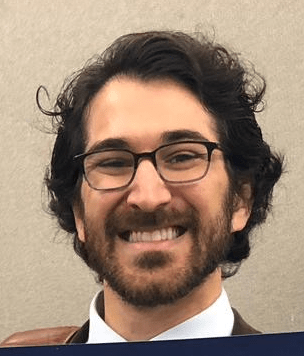Podcast: Embed
Subscribe: Apple Podcasts | Spotify | Amazon Music | Android | Pandora | iHeartRadio | Blubrry | TuneIn | Deezer | RSS
CardioNerds (Amit & Dan) join UT Southwestern cardiology fellows (Shreya Rao, Sonia Shah, and Nick Hendren) for some delicious Dallas Tacos! They discuss a fascinating case of syphilitic aortitis with severe aortic regurgitation presenting as cardiogenic shock. Program director Dr. Gail Peterson provides the E-CPR and a message for applicants. Episode notes were developed by Johns Hopkins internal medicine resident Evelyn Song with mentorship from University of Maryland cardiology fellow Karan Desai.
Jump to: Patient summary – Case figures & media – Case teaching – Educational video – References – Production team

The CardioNerds Cardiology Case Reports series shines light on the hidden curriculum of medical storytelling. We learn together while discussing fascinating cases in this fun, engaging, and educational format. Each episode ends with an “Expert CardioNerd Perspectives & Review” (E-CPR) for a nuanced teaching from a content expert. We truly believe that hearing about a patient is the singular theme that unifies everyone at every level, from the student to the professor emeritus.
We are teaming up with the ACC FIT Section to use the #CNCR episodes to showcase CV education across the country in the era of virtual recruitment. As part of the recruitment series, each episode features fellows from a given program discussing and teaching about an interesting case as well as sharing what makes their hearts flutter about their fellowship training. The case discussion is followed by both an E-CPR segment and a message from the program director.
CardioNerds Case Reports Page
CardioNerds Episode Page
CardioNerds Academy
Subscribe to our newsletter- The Heartbeat
Support our educational mission by becoming a Patron!
Cardiology Programs Twitter Group created by Dr. Nosheen Reza

Patient Summary
- A 57 year old male presents with 3 months of progressive dyspnea on exertion, orthopnea and lower extremity edema. However, his symptoms suddenly worsened over the past few days. He has no other known medical history or prior surgeries. Further, he denies tobacco, alcohol or illicit drug use and reports a preference for male sexual partners.
- On presentation to the hospital, he had a markedly wide pulse pressure, a decrescendo diastolic murmur at the left upper sternal border and a water hammer pulse readily identifiable. TTE confirmed the clinical findings of severe aortic regurgitation with holodiastolic flow reversal in the thoracic, as well as the thoraco-abdominal aorta. Right heart catheterization was performed and showed equalization of the LVEDP and aortic diastolic pressure at 40 mmHg with Cardiac Output of 1.73 L/min. RPR was positive at a high titer (1:512). He was ultimately diagnosed with syphilitic aortitis with severe aortic regurgitation.
- He progressed to cardiogenic shock and was managed with nitroprusside, dobutamine, and furosemide infusion as well as IV penicillin for syphilitic aortitis and presumed neurosyphilis. The patient was stabilized and eventually underwent an uncomplicated prosthetic aortic valve replacement and aortic root resection and reconstruction and has done well post-operatively!
- Pathology was consistent with syphilitic aortitis: “lymphoplasmacytic inflammation, large foci of necrosis, and neovascularization”
Case Media

CXR: Cardiomegaly, bilateral pleural effusions, evidence of pulmonary congestion 
Normal sinus rhythm, left atrial enlargement, LVH and possible septal infarct. 
LV tracing (black), Aortic tracing (red) 
Apical long view with color Doppler noting marked flow through aortic valve during diastole. 
Continuous Doppler through trileaflet aortic valve consistent with severe AI (P1/2 92 msec). 
Pulse wave Doppler of abdominal aorta demonstrating holodiastolic flow reversal consistent with severe AI.
Episode Schematics & Teaching
The CardioNerds 5! – 5 major takeaways from the #CNCR case
- When suspecting severe AR, first characterize the AR as either acute or chronic based on clinical evaluation and hemodynamics. From there, AR can further be characterized as primary (valve disorder) or secondary (disorder of the aortic root/aorta).
- Chronic AR exposes the LV to volume overload (leading to increased LVEDV), afterload, and increased wall stress. Chronic severe AR has two phases:
- Compensated Phase: Responding to increased wall stress, eccentric hypertrophy occurs. LVEF is maintained during this stage, though LV dilation may begin to occur. Patients are typically asymptomatic.
- Decompensated Phase: Eventually, compensatory mechanisms are insufficient and significant LV dilation occurs and LVEF decreases. Patients will develop exertional dyspnea and CHF symptoms.
- The physical exam of patients with chronic AR is full of classic findings and eponyms! Specifically, regarding murmurs of AR, there is the classic diastolic, blowing, decrescendo murmur heard in the LUSB. Typically, the severity of AR correlates with the duration of the murmur more than the intensity.
- Some 2D echo findings of chronic, severe AR include pressure half-time less than 200 ms, holo-diastolic flow reversal in the proximal descending aorta and/or abdominal aorta, and a dilated LV due to remodeling. Other criteria include vena contracta > 0.6 cm, flail valve, regurgitant volume > 60 mL/beat, regurgitant fraction > 50%, and LVESD > 50 mm.
- The goal of management of acute AR is temporary stabilization before proceeding with surgical intervention. This includes vasodilators to reduce afterload and potentially inotropy to support cardiac output. Avoid excessive negative chronotropy as it can prolong diastole and worsen acute AR. If patient is bradycardiac, can increase HR with beta agonists or temporary pacing to decrease time spent in diastole.
References
CardioNerds Case Reports: Recruitment Edition Series Production Team

Bibin Varghese, MD 
Rick Ferraro, MD 
Tommy Das, MD 
Eunice Dugan, MD 
Evelyn Song, MD 
Colin Blumenthal, MD 
Karan Desai, MD 
Amit Goyal, MD 
Daniel Ambinder, MD







